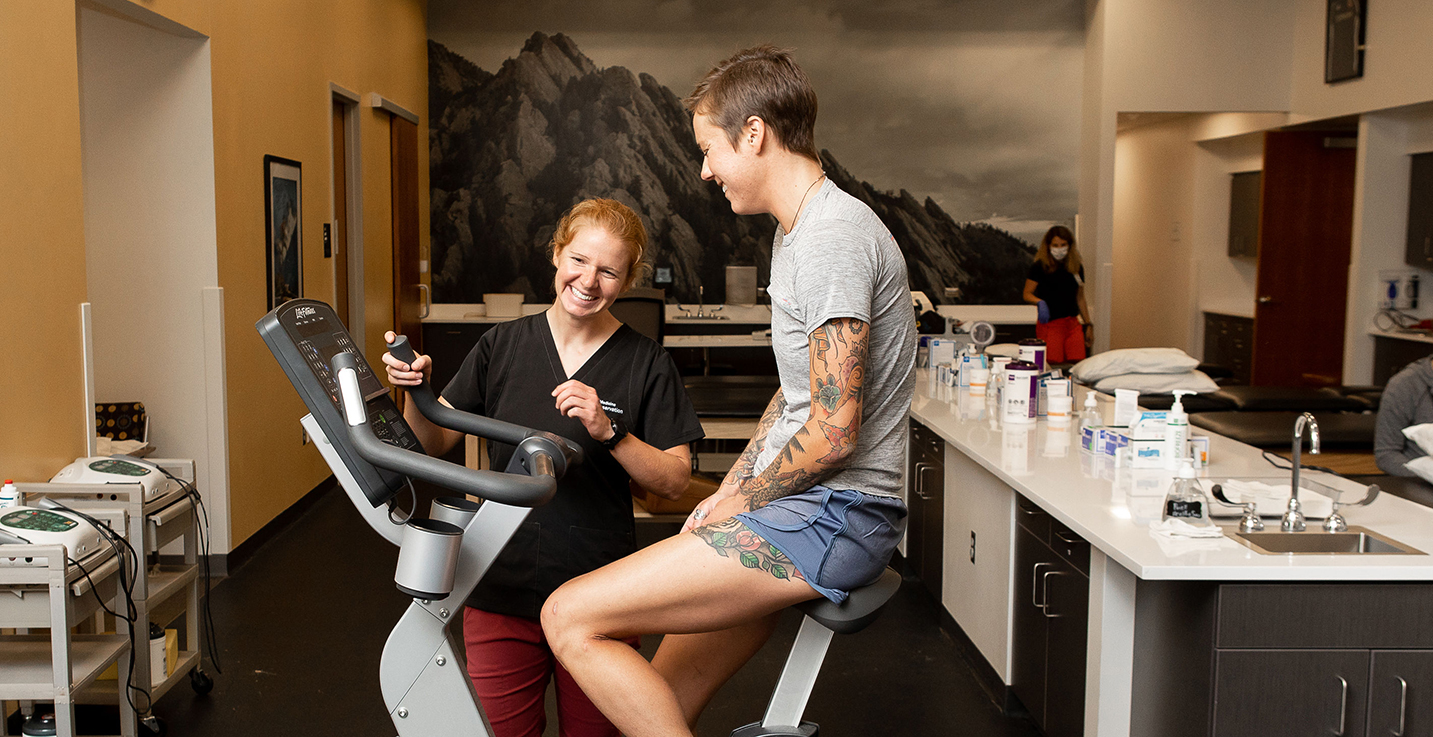
Each stage is designed to meet healing timelines and post-operative range of motion (ROM) and weight bearing (WB) restrictions. Overall, a protocol is a general outline of what typical exercises and progressions look like. Even though it may seem like a generic approach, each patients’ specific goals, healing, surgery, and functional capabilities are considered with rehab progression and necessary adjustments are made with this in mind. The progression is not linear and differs widely between patients based on multiple factors. Different patients starting at different baseline muscle power and pelvic mechanics, undergoing slightly different surgical procedures, will require different timeframes to complete similar protocol phases.
If a protocol is not followed, tissue healing may be impacted or poor movement patterns may develop or persist. With post-op hip protocols for our hip team, there is an emphasis on reworking body mechanics as well as muscle activation in order to prevent injury in the future and maximize outcomes. For example, glute activation, as opposed to quadriceps activation, is a major theme of our rehab protocols. Another reason for following rehab protocols is to help with consistent communication between providers. Consistency is key.
Rehab protocols vary based on surgical interventions (PAO vs. arthroscopy vs. DFO, etc.), but generally include three formal stages a patient must progress through before full return to activity or sport. Each stage is designed to meet the needs of the patient and preserve postoperative hip precautions. Stationary biking is also used at various stages to help with range of motion and help keep muscles activated and mobile.
Six team members with a combined 78 years of experience work closely with the clinical team to provide fully-integrated, well-coordinated care. They each have different special interests including running, gymnastics, swimming, climbing, etc. The physical therapy team regularly consults with the surgical team to ensure the best possible patient outcomes and if needed will coordinate a hands-on assessment with the clinical team to monitor the patient’s progress.
Stage one rehab protocols hinge on range of motion, muscle activation an d core stability. Patients typically spend 4-6 weeks in this stage
Stage two rehab protocols focus on range of motion and muscle activation. Patients typically spend 2-6 weeks in this stage.
Stage three rehab protocols transition from range of motion (ROM) and muscle activation to weight bearing and core stability exercises. Patients typically spend 4-12 weeks in this stage.
Using a pool for introducing partial weight bearing (PWB) activities helps normalize walking, increase endurance, and optimize movement patterns while removing the stress weight bearing (WB) places on the hip and pelvis. You will be able to perform greater range of motion (ROM), advanced balance activity, and a greater volume of exercises on your feet in the water than you will on land. As your body relearns how to move in a PWB position, the transition to similar activities on land will occur with decreased pain and compensation and improved proficiency.